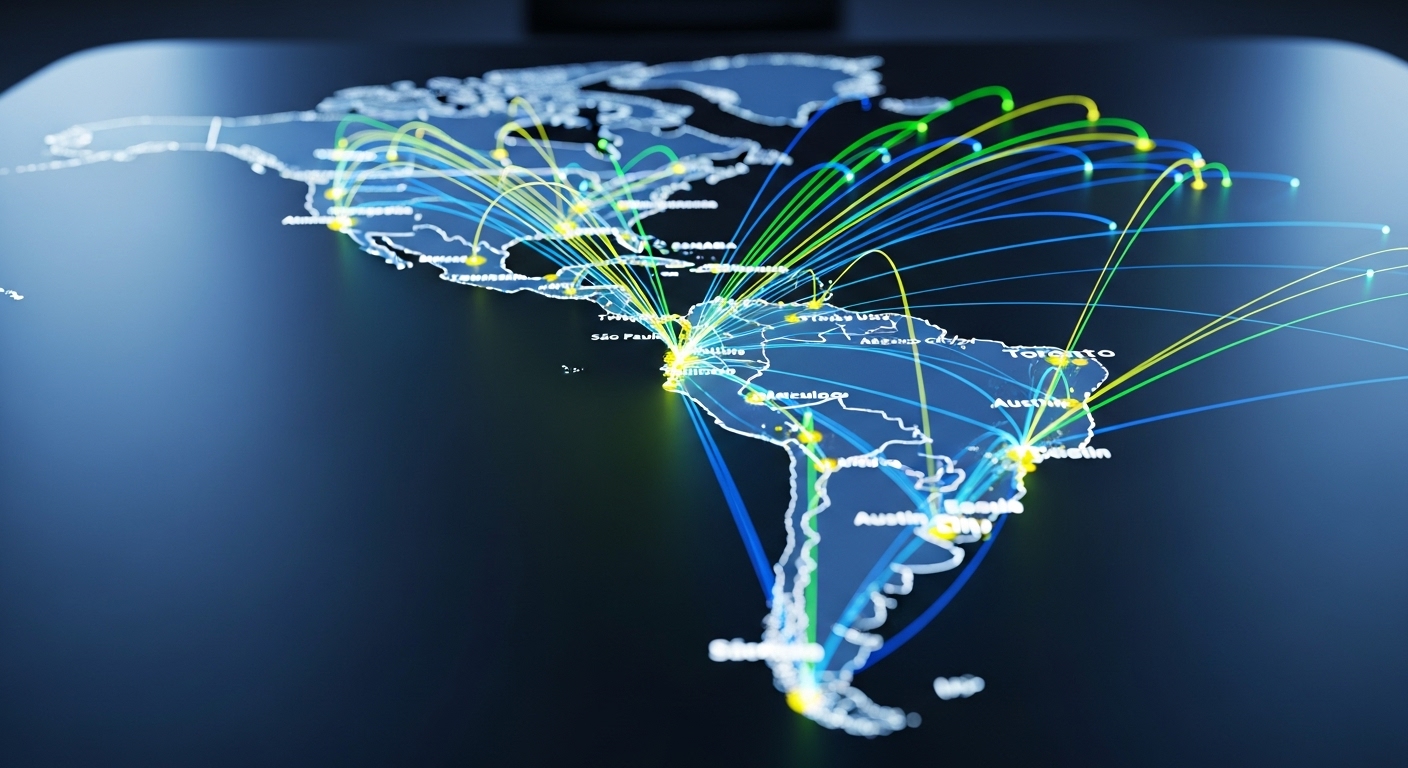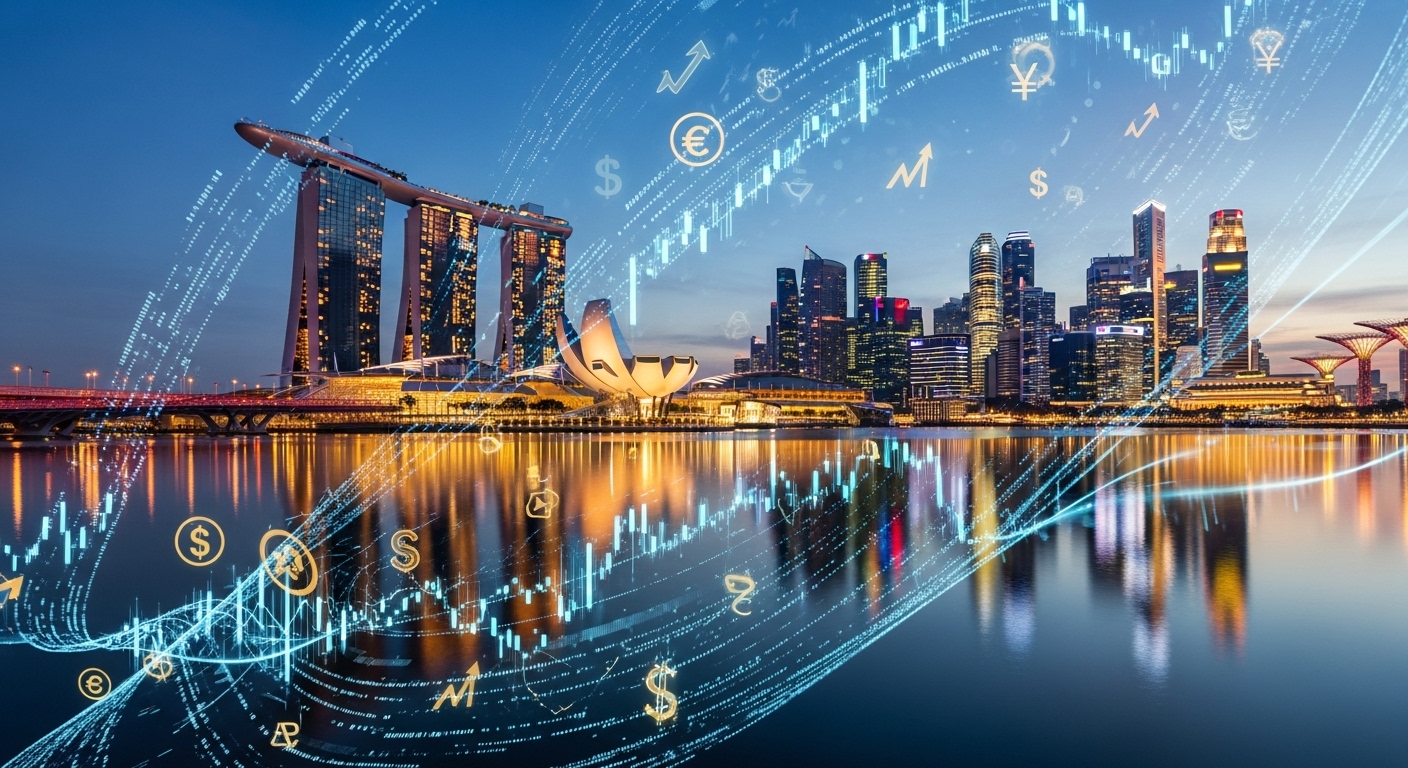In the intricate dance of global commerce, the traditional geographic lines are blurring. The long-held notion of managing Asia-Pacific (APAC) operations from a regional headquarters in Singapore or Hong Kong is being challenged by a more nuanced, hybrid approach. As capital flows and strategic priorities shift, a surprising anchor is emerging for Western firms looking east: historic European capitals. Recent analyses show a significant uptick in European investment into APAC’s high-growth sectors, particularly deep tech and renewables. This isn’t just about capital; it’s about strategic positioning. Companies are discovering the immense value of a European command center that can bridge time zones, cultures, and regulatory environments. This new paradigm requires a base that offers not just connectivity, but also prestige, a deep talent pool, and unparalleled access to financial and legal expertise. At the forefront of this strategic pivot is Paris, a city rapidly cementing its role as the premier European gateway for firms with ambitious APAC expansion plans.
The new map of Asia-Pacific opportunity
The Asia-Pacific region is no longer a monolith dominated by a few key players. While titans like Tokyo and Singapore remain crucial, the landscape has become polycentric and far more specialized. A new league of dynamic hubs, including Bangkok, Kuala Lumpur, and Ho Chi Minh City, is attracting significant foreign direct investment, driven by booming digital economies and rapidly expanding infrastructure. This diversification presents both an opportunity and a challenge for global firms. It’s no longer sufficient to have a single regional headquarters; a successful strategy requires a more agile, multi-hub approach that can engage with the unique strengths of each market. This could mean tapping into Shenzhen’s manufacturing prowess, leveraging Singapore’s fintech ecosystem, or capitalizing on Vietnam’s burgeoning consumer market. This complexity demands a central coordination point that sits outside the immediate region, capable of providing a stable, macro-level perspective. A European anchor allows for strategic oversight without getting bogged down in the operational specifics of any single APAC market, enabling leaders to manage a diverse portfolio of interests with greater clarity and control.
Why a European anchor is critical for APAC success
Placing the strategic command for an APAC expansion in Europe might seem counterintuitive, but it offers decisive advantages in today’s interconnected world. Firstly, it solves the tyranny of the time zone. A European base allows for a working day that overlaps with both the closing of business in key Asian markets and the opening of American markets, creating a seamless 24-hour operational cycle. This is invaluable for global finance, M&A activity, and real-time strategic decision-making. Secondly, a European hub provides a stable and predictable regulatory environment. Navigating the diverse and often complex legal and compliance landscapes across multiple APAC nations can be a significant drain on resources. By anchoring the strategic core in a city with a robust legal framework, companies can standardize governance and risk management, applying a consistent set of principles across their varied regional operations. Finally, it acts as a cultural and talent bridge. It allows companies to cultivate a globally-minded leadership team that blends European and Asian perspectives, fostering a more nuanced and effective approach to market entry, partnerships, and talent management across the vast and diverse APAC region.
Paris: The strategic gateway to the East
Amidst the great cities of Europe, Paris has emerged as the nexus for this new global strategy. Its appeal is multifaceted. The city’s tech ecosystem is booming, with significant venture capital investment, particularly in high-growth sectors like artificial intelligence, making it a magnet for global talent. Initiatives like the French Tech Ticket program and major conferences such as VivaTech create a fertile ground for innovation that resonates with the dynamic energy of APAC’s tech hubs. More than just a tech hub, Paris is a global center for finance, law, and diplomacy. This concentration of expertise provides the critical support infrastructure needed to manage complex cross-continental operations. Furthermore, the French government has been proactive in fostering these connections. A landmark move in 2024 was the opening of a new Paris office by Temasek, Singapore’s sovereign wealth fund, with plans to invest up to $25 billion in the region, signaling a powerful vote of confidence in the city’s strategic importance. For a company orchestrating a complex, multi-market APAC strategy, a presence in Paris 1st provides unmatched access to the resources required for success.
The prestige and power of a premier address
Within Paris, the 1st arrondissement represents the apex of strategic positioning. This isn’t merely about a prestigious address; it’s about operational excellence. The area is home to the world’s leading financial institutions, corporate law firms, and strategic consultancies. Placing a headquarters here means immediate access to the elite advisors necessary for navigating complex international expansions, mergers, and acquisitions. The connectivity is unparalleled, not just digitally, but physically, with seamless transport links that facilitate easy travel for executives and partners. For a company coordinating multi-billion dollar investments across continents, the ability to convene a meeting with top legal, financial, and strategic minds at a moment’s notice is a powerful competitive advantage. This concentration of intellectual capital and corporate power creates an environment where decisions are made and deals are closed. It sends a clear message to partners and competitors alike that the company is a serious global player, operating at the very highest level of international business and finance.
Building a resilient Europe-APAC operational bridge
Establishing a successful link between a Parisian headquarters and multiple APAC hubs requires more than a physical office; it demands a robust technological and cultural infrastructure. The operational bridge must be built on a foundation of seamless, secure, and high-speed communication platforms that can connect teams across time zones in real-time. This means investing in unified communications systems, collaborative project management tools, and resilient cloud infrastructure to ensure data flows securely and efficiently between, for example, a strategic team in Paris 1st and operational teams in Singapore, Seoul, or Sydney. Culturally, the bridge requires fostering a ‘one-company’ mindset that transcends geographic boundaries. This involves regular cross-continental travel for key personnel, establishing shared corporate values, and implementing leadership development programs that cultivate global perspectives. The goal is to create a fluid organization where strategic directives from Paris are informed by on-the-ground realities from APAC, and regional insights are seamlessly integrated into the global vision.
Navigating the nexus of capital and culture
The flow of capital and talent between Europe and Asia-Pacific is a two-way street, and a Parisian hub is perfectly positioned to manage this complex interplay. When European firms expand eastward, they must navigate a mosaic of distinct business cultures, consumer behaviors, and market dynamics. A central command allows for the development of a coherent, yet adaptable, market entry strategy. Conversely, as APAC-based corporations and investors—like Singapore’s Temasek—increase their European footprint, they need a sophisticated landing pad. They require a location that understands the nuances of both Western and Eastern business practices. This is where a dedicated team can facilitate everything from regulatory compliance and M&A due diligence to brand localization and talent acquisition. By serving as this crucial nexus, a headquarters in a location like Paris 1st becomes more than just an administrative center; it becomes the cultural and financial heart of the company’s global ambitions, ensuring that opportunities are maximized and risks are mitigated in both directions.
In conclusion, the logic for anchoring an Asia-Pacific strategy in the heart of Europe is becoming undeniable. The diversification of APAC’s own economic landscape demands a level of oversight that is best achieved from a stable, connected, and resource-rich hub outside the region. Paris, with its potent combination of technological dynamism, financial muscle, and deep intellectual capital, has firmly established itself as the premier choice for this new strategic model. It offers a unique vantage point from which to manage the complexities of global expansion, bridging time zones, legal systems, and cultural divides. For multinational corporations looking to not just participate but lead in the next phase of APAC growth, the path to the East now runs decisively through the historic and influential corridors of the French capital. The Parisian pivot is no longer a niche strategy for a select few; it is rapidly becoming the foundational blueprint for building a resilient and truly global enterprise in the 21st century.





